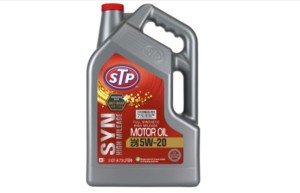Knowing how much oil your car needs is crucial for maintaining its engine health and performance. Oil lubricates engine components, reducing friction and preventing wear and tear. It also helps regulate engine temperature, preventing overheating. Using the correct amount of oil is vital; too little can lead to engine damage, while too much can cause foaming and reduce lubrication effectiveness.
 alt text: Various types of motor oil displayed on a shelf.
alt text: Various types of motor oil displayed on a shelf.
Determining Your Car’s Oil Capacity
Several methods can help you determine the precise amount of oil your car requires:
Consult Your Owner’s Manual
Your car’s owner’s manual is the most reliable source for information on oil capacity. It specifies the recommended oil type, viscosity (thickness), and the required quantity for your specific engine. The manual also outlines the recommended oil change intervals. If you can’t find your physical manual, most manufacturers offer digital versions on their websites, often searchable by vehicle identification number (VIN).
Check the Oil Dipstick
The dipstick, usually located in the engine compartment, provides a quick visual check of the oil level. It has two markings indicating the minimum and maximum oil levels. The oil level should ideally fall between these two marks. However, the dipstick only indicates the current level, not the total capacity. Ensure the engine is off and cool before checking the oil level.
Refer to Online Resources
Numerous online resources, including automotive forums and websites dedicated to specific car models, can offer information on oil capacity. However, always verify this information with your owner’s manual to ensure accuracy. Some auto parts store websites also provide oil capacity information based on your car’s make and model.
Contact a Mechanic
If you’re unsure about determining your car’s oil capacity, consult a qualified mechanic. They can provide accurate information and perform an oil change if needed.
Understanding Oil Types and Viscosity
Choosing the correct oil type and viscosity is as important as using the right quantity.
Oil Types
- Conventional Oil: Refined crude oil, suitable for older engines and less demanding driving conditions.
- Synthetic Oil: Engineered oil with enhanced performance characteristics, better suited for high-performance engines, extreme temperatures, and heavy loads.
- High-Mileage Oil: Formulated for engines with over 75,000 miles, containing additives to reduce leaks, sludge, and oil consumption.
Your owner’s manual specifies the recommended oil type for your car.
Oil Viscosity
Viscosity refers to the oil’s thickness and its ability to flow at different temperatures. It’s indicated by a two-number system (e.g., 5W-30). The first number (5W) represents the oil’s viscosity at low temperatures (winter), while the second number (30) indicates its viscosity at higher temperatures. Using the correct viscosity is crucial for optimal engine performance and protection. Your owner’s manual will recommend the appropriate viscosity grade for your engine and climate.
Conclusion
Maintaining the correct oil level in your car is essential for its longevity and performance. Use the resources outlined above to determine how much oil your car needs and the appropriate type and viscosity. Regularly checking your oil level and adhering to the recommended oil change schedule will help prevent costly engine damage and ensure your car runs smoothly for years to come. Remember to always dispose of used oil responsibly at a designated recycling center.

